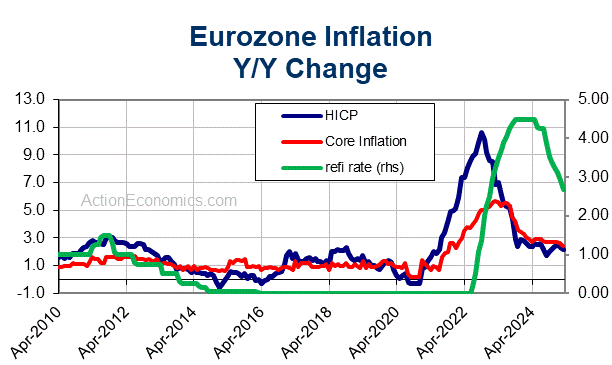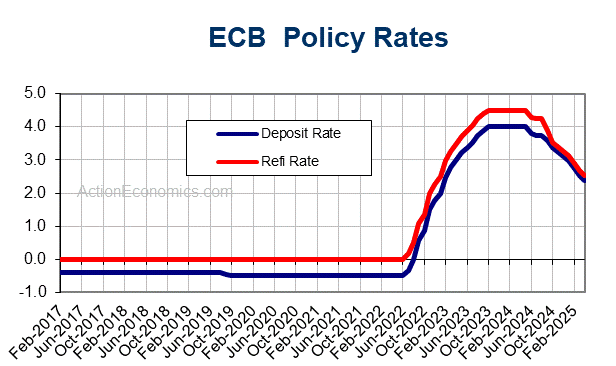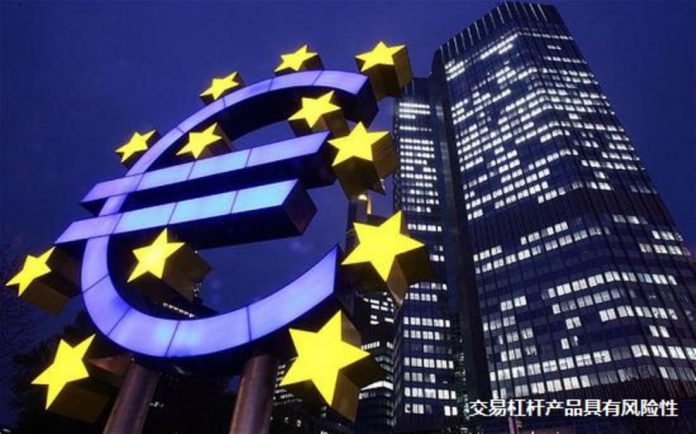Inflation is coming down on both sides of the channel, but while headline rates are dropping thanks to base effects, services price inflation in particular looks sticky.
In Europe, the August flash HCOB PMI reports were a huge negative surprise, with the plunge in services confidence seemingly destroying the hope that strong domestic demand will keep growth on track even as the manufacturing sector continues to struggle. Today’s Ifo numbers only added to growth concerns and next week’s inflation report will likely be key for the September decision.
After the ECB removed any implicit tightening bias at the last meeting, the data makes a pause in September more likely. A Reuters source story said that ECB officials are increasingly concerned about the worsening growth prospects with a number of council members advocating a “pause”. Reuters cited 8 unnamed people “familiar with the matter” and said “several” saw an even chance for either a hike or a pause. Fewer suggested a pause was the most likely outcome, but none said a hike was the most probable outcome.
All of the sources stressed that in the case of a pause the ECB would emphasize that a hold in September would mean a pause and not the end of the tightening cycle. There are signs that the weakness in manufacturing is coming to an end, which would mean another hike later in the year remains on the cards, even if it is a hold in September. Even if there were no further hikes in September, the higher for longer message still stands — in the Eurozone as well as the UK.
 Eurozone HICP inflation was confirmed at 5.3% y/y in the final reading for July. The breakdown showed that the deceleration from the 5.5% y/y rate in June was to a large extent due to lower energy prices, which fell -0.2 m/m, and -6.1% y/y. Food price inflation decelerated to a still high 10.8% y/y. Core inflation meanwhile held steady at 5.5% y/y. There are signs that at least goods producers are passing on lower energy prices, and producer price inflation has come down alongside a sharp drop in import prices. HICP data showed that prices for non-energy industrial goods dropped -2.7% m/m, bringing the annual rate down to 5.0% y/y from 5.5% y/y. Services price inflation by contrast continues to accelerate, which is likely also due to higher wages, which are pushing up cost pressures. The decline in the headline is not a sign that inflation risks have disappeared.
Eurozone HICP inflation was confirmed at 5.3% y/y in the final reading for July. The breakdown showed that the deceleration from the 5.5% y/y rate in June was to a large extent due to lower energy prices, which fell -0.2 m/m, and -6.1% y/y. Food price inflation decelerated to a still high 10.8% y/y. Core inflation meanwhile held steady at 5.5% y/y. There are signs that at least goods producers are passing on lower energy prices, and producer price inflation has come down alongside a sharp drop in import prices. HICP data showed that prices for non-energy industrial goods dropped -2.7% m/m, bringing the annual rate down to 5.0% y/y from 5.5% y/y. Services price inflation by contrast continues to accelerate, which is likely also due to higher wages, which are pushing up cost pressures. The decline in the headline is not a sign that inflation risks have disappeared.
The rest of the data releases over the past week were too backward looking to really change the rate outlook. The Eurozone trade surplus widened to EUR 12.5 bln in June, from EUR 0.2 bln (was EUR -0.9 bln) in May. Exports as well as imports declined over the month, but the sharp correction in nominal imports is largely a reflection of lower import prices. The current account is also improving. The Eurozone posted a seasonally adjusted current account surplus of EUR 36 bln in June, up from EUR 8 bln in the previous month.

ECB officials have been pretty quiet since the last meeting, but chief economist Lane said in a podcast on Friday that “there are a number of reasons to believe that the European economy will grow over the next couple of years”. He added that the “trick” for the ECB “is basically to make sure demand does not add on supply. So it’s not a question of driving demand deeply negative. It just has to grow more slowly than supply”. Lane also said that he thinks “many people are in okay shape. So they will respond to high interest rates by reducing demand”, and that the ECB doesn’t “think it will lead to this kind of vortex that leads to a deep recession”. The main scenario is still a soft landing then, it seems.
With policy settings now restrictive, this doesn’t necessarily mean that further hikes will be necessary. Indeed, Lagarde, who is set to speak at the annual Jackson Hole conference today, is expected to keep all options on the table for September.
The PMI reports clearly make a September hike less likely and boost the argument for the ECB to take a wait and see stance next month. Next week’s preliminary inflation report could still change the picture, though on balance it doesn’t seem likely that core inflation will look sufficiently bad to force Lagarde’s hand. Also, Lane’s comments suggest that even the doves are not pushing for a quick reversal of rate hikes, and the higher-for-longer message remains in place. Unless there is a marked deterioration in the economic outlook, those expecting early cuts are likely to be disappointed.
Looking ahead, another hike later in the year seems the most likely option, though clearly, that will also depend on developments in the US and China, as well as energy prices.
EURUSD held below 1.09 as Treasury yields nudged higher. The US economy is looking in better shape than the Eurozone, and it is more likely to cope well with additional rate hikes. Germany in particular looks more vulnerable to the fallout from ongoing weakness in the Chinese economy. Against this background the US Dollar seems the better bet, which leaves the EUR vulnerable to further correction.
Click here to access our Economic Calendar
Andria Pichidi
Market Analyst
Disclaimer: This material is provided as a general marketing communication for information purposes only and does not constitute an independent investment research. Nothing in this communication contains, or should be considered as containing, an investment advice or an investment recommendation or a solicitation for the purpose of buying or selling of any financial instrument. All information provided is gathered from reputable sources and any information containing an indication of past performance is not a guarantee or reliable indicator of future performance. Users acknowledge that any investment in Leveraged Products is characterized by a certain degree of uncertainty and that any investment of this nature involves a high level of risk for which the users are solely responsible and liable. We assume no liability for any loss arising from any investment made based on the information provided in this communication. This communication must not be reproduced or further distributed without our prior written permission.




















